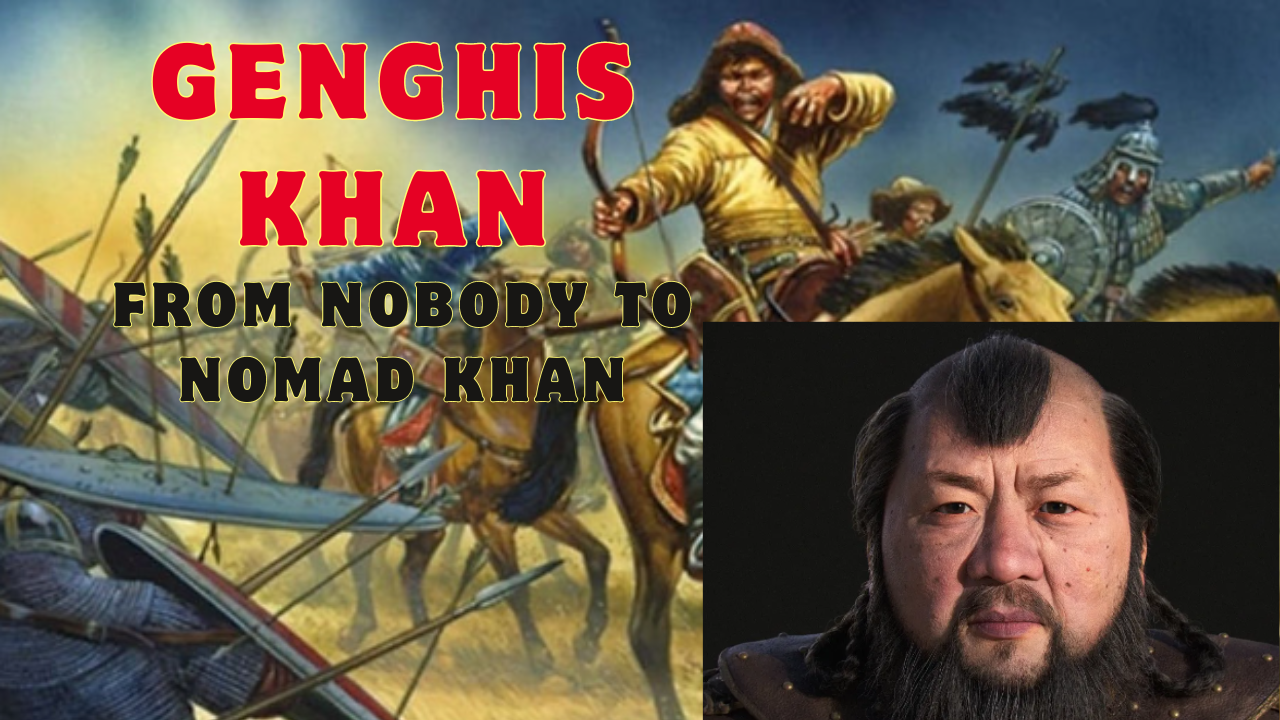Genghis Khan, a name that evokes images of vast empires, fierce warriors, and earth-shattering conquests. But the man behind the legend is more than just a bloodthirsty tyrant. This blog delves into the life and legacy of Genghis Khan, exploring not only the historical facts but also the fascinating myths that continue to surround him.
Early Life: A Struggle for Survival
- Born Temüjin: Around 1162, Temüjin (meaning “of iron”) was born into a nomadic Mongol tribe. His father, a chieftain, was poisoned by rivals, leaving the young Temüjin and his family ostracized and facing poverty.
- Leadership Emerges: Despite the hardships, Temüjin displayed natural leadership qualities. He formed alliances, strategically built his power base, and rose through the ranks of Mongol warriors.
Uniting the Mongol Tribes:
- Ruthless and Strategic: Temüjin wasn’t afraid to use violence and cunning to unite the warring Mongol tribes. He implemented a strict legal code (Yassa) and established a meritocratic military system.
- Military Genius: His cavalry tactics, emphasizing mobility, swift communication, and horsemanship, proved highly effective in conquering rival tribes.
- The Mongol Empire Takes Shape: By 1206, Temüjin had united the Mongol tribes under his rule and was proclaimed Genghis Khan (meaning “Universal Ruler”).
An Era of Conquest:
- Expansion Eastward: The Mongol Empire’s expansion began in China, conquering the fragmented Jin Dynasty.
- Westward Expansion: Genghis Khan’s relentless campaigns stretched westward, encompassing vast swathes of Central Asia, reaching the Caspian Sea.
- A Legacy of Devastation: The conquests were brutal, marked by massacres and destruction. Cities were razed, and entire populations were wiped out.
The Mongol Legacy: Beyond Conquest
- Cultural Exchange: Despite the violence, the Mongol Empire facilitated unprecedented trade and cultural exchange across Eurasia. The Silk Road flourished under Mongol rule.
- Pax Mongolica: A period of relative peace and stability emerged under Mongol rule, enabling trade and cultural exchange to flourish across their vast domain.
- A Controversial Figure: Genghis Khan remains a complex and controversial figure. He is revered by some as a unifier and military genius, while others condemn him for the brutality of his conquests.
Interesting Facts about Genghis Khan:
- He May Have Had a Birthmark: Legends say Genghis Khan was born with a blood clot in his hand, signifying his destiny as a great leader.
- He Was Religious Tolerant: Genghis Khan allowed conquered people to follow their own religions, promoting religious freedom within his empire.
- He Established a Universal Postal System: The Yam, a network of relay stations, facilitated communication across the vast Mongol Empire.
- He Had a Massive Army: Estimates suggest Genghis Khan’s army could have numbered over one million soldiers at its peak.
Myths and Misconceptions:
- Myth: He Was a Giant: There’s no evidence to suggest Genghis Khan was unusually tall.
- Myth: He Drank From the Skulls of His Enemies: There’s no historical record to support this gruesome claim.
- Myth: He Was Responsible for the Great Wall of China: While he did raid China, the Great Wall’s construction predates Genghis Khan.
The End of an Era:
- Genghis Khan’s Death: In 1227, Genghis Khan died, leaving behind an empire spanning over 13 million square miles.
- The Legacy Lives On: His successors, including his grandson Kublai Khan, further expanded the empire before its eventual fragmentation.
Genghis Khan’s impact on world history is undeniable. He transformed the political landscape of Eurasia and left a lasting legacy, both positive and negative. The myths surrounding him add another layer of intrigue to this fascinating historical figure.
What are your thoughts on Genghis Khan? Do you find the facts or the myths more interesting? Share your thoughts in the comments below!



